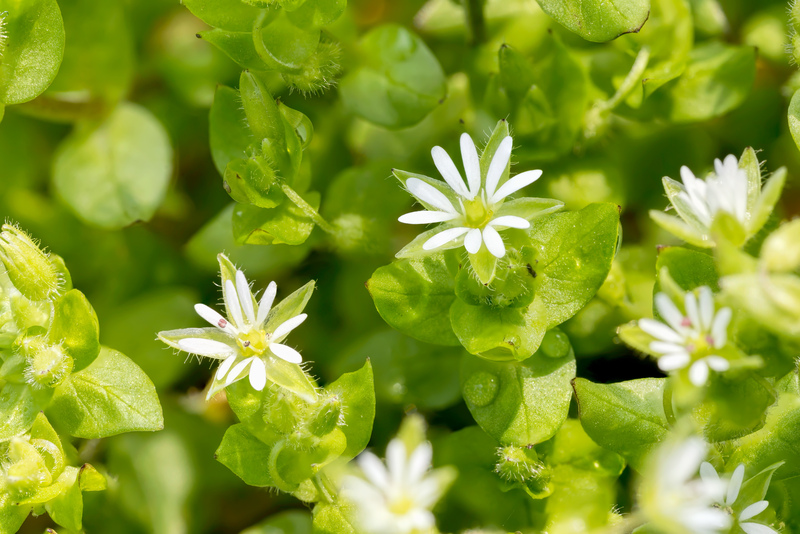Steps to Grow Your Own Blueberries
Posted on 22/04/2025
Blueberries are not only delicious but also packed with nutrients and antioxidants. Growing your own blueberries can be a rewarding and fruitful endeavor. With some basic knowledge and a little patience, you can successfully cultivate your blueberry plants at home. Here are the steps to get you started on growing your own blueberries.
Selecting the Right Blueberry Variety
The first step in growing blueberries is selecting the right variety for your region. There are three main types of blueberries:
- Highbush Blueberries: These are the most common type grown in home gardens and can reach up to 6 to 8 feet tall. They are suitable for areas with colder winters.
- Lowbush Blueberries: These smaller plants grow about 1 to 2 feet tall and spread naturally. They are ideal for colder regions and are often used for commercial production.
- Rabbiteye Blueberries: Typically found in the southeastern United States, these plants can grow up to 10 feet tall and require a long growing season.
Choosing the right type of blueberry will ensure that your plants thrive in your specific climate and soil conditions.

Choosing the Best Location
Blueberries require a sunny location with well-drained soil. Here are some tips for selecting the best planting spot:
- Sunlight: Ensure that your blueberries receive at least 6 to 8 hours of direct sunlight daily.
- Soil Quality: Test your soil to determine its pH level. Blueberries prefer acidic soil with a pH between 4.5 and 5.5.
- Drainage: Blueberries do not tolerate wet feet. Ensure the planting site has good drainage to prevent root rot.
Amend the soil with organic matter, such as peat moss or pine bark, to improve its structure and acidity.
Preparing the Soil
Proper soil preparation is crucial for the successful growth of blueberry plants. Follow these steps to prepare your soil:
- Test the Soil: Use a soil test kit to check the pH level and nutrient content of your soil.
- Amend the Soil: If the soil pH is too high, lower it by adding elemental sulfur or aluminum sulfate. Follow the recommendations based on your soil test results.
- Enhance Drainage: If your soil has poor drainage, consider building raised beds or adding organic matter to improve aeration.
Preparing the soil well in advance of planting will provide the best conditions for your blueberry plants to thrive.
Planting Blueberries
Once the soil is prepared, you can plant your blueberry bushes. Here are the steps for proper planting:
- Timing: The best time to plant blueberries is in early spring or late fall when the plants are dormant.
- Spacing: Space highbush blueberries 5 to 6 feet apart and lowbush blueberries 1 to 2 feet apart to allow room for growth and air circulation.
- Planting Depth: Dig a hole deep enough to accommodate the root system without crowding. Place the plant in the hole, spread the roots, and fill with soil, ensuring the crown is at ground level.
- Watering: Water the plants thoroughly after planting to help settle the soil and eliminate air pockets.
Planting blueberries properly will establish a strong foundation for healthy growth and fruit production.
Watering and Mulching
Blueberries have shallow root systems that require consistent moisture. Follow these guidelines for watering and mulching:
- Watering: Keep the soil consistently moist but not waterlogged. Water deeply and regularly, especially during dry periods.
- Mulching: Apply a 2- to 4-inch layer of organic mulch, such as pine needles, wood chips, or straw, around the base of the plants. Mulch helps retain moisture, suppress weeds, and maintain soil acidity.
Adequate watering and mulching will promote healthy root development and improve plant growth.
Fertilizing Blueberries
Blueberries have specific nutrient requirements. Fertilize them properly to ensure optimal growth and fruit production:
- Timing: Apply fertilizer in early spring as new growth begins and again in late spring.
- Type of Fertilizer: Use a fertilizer formulated for acid-loving plants, such as azalea or rhododendron fertilizer. Avoid using fertilizers high in nitrogen.
- Application: Follow the manufacturer's instructions for the appropriate amount of fertilizer. Apply it evenly around the base of the plants, avoiding direct contact with the stems.
Proper fertilization will provide the necessary nutrients for vigorous growth and abundant fruiting.
Pruning and Maintenance
Regular pruning and maintenance are essential for the health and productivity of your blueberry plants. Here's how to keep your plants in top shape:
- Pruning: Prune highbush blueberries in late winter or early spring when the plants are dormant. Remove dead, damaged, or diseased wood and thin out weak or crowded branches.
- Rejuvenation: For older plants, consider rejuvenation pruning by cutting back the oldest canes to the ground to encourage new growth.
- Weed Control: Keep the area around your blueberry plants free from weeds to reduce competition for nutrients and water.
Maintaining your plants through regular pruning and upkeep will foster healthy growth and maximize fruit yield.
Protecting Blueberries from Pests and Diseases
Blueberries are susceptible to various pests and diseases. Implement these strategies to protect your plants:
- Birds: Use netting or bird deterrents to prevent birds from eating the berries.
- Insects: Monitor for pests such as aphids, blueberry maggots, and scale insects. Use organic insecticides or introduce beneficial insects to manage infestations.
- Diseases: Watch for signs of diseases like powdery mildew, mummy berry, and root rot. Use fungicides and practice good sanitation by removing infected plant material.
By taking proactive measures, you can reduce the risk of pests and diseases affecting your blueberry plants.

Harvesting and Storing Blueberries
Harvesting your homegrown blueberries is the most delightful part of the process. Here's how to do it properly:
- Ripeness: Blueberries are ripe when they turn a uniform blue color and easily detach from the plant with a gentle tug.
- Frequency: Harvest every few days as the berries continue to ripen.
- Storage: Store harvested blueberries in a cool, dry place. Refrigerate them to extend their freshness, or freeze them for long-term storage.
Enjoying your freshly harvested blueberries is the ultimate reward for your efforts.
Conclusion
Growing your own blueberries can be a gratifying experience that provides you with delicious, nutritious fruit. By selecting the right variety, preparing the soil, planting correctly, maintaining proper care, and protecting against pests and diseases, you can cultivate healthy and productive blueberry plants. Follow these steps to enjoy the numerous benefits of homegrown blueberries in your garden.






 Certified and experienced landscapers
Certified and experienced landscapers



 Get a Quote
Get a Quote